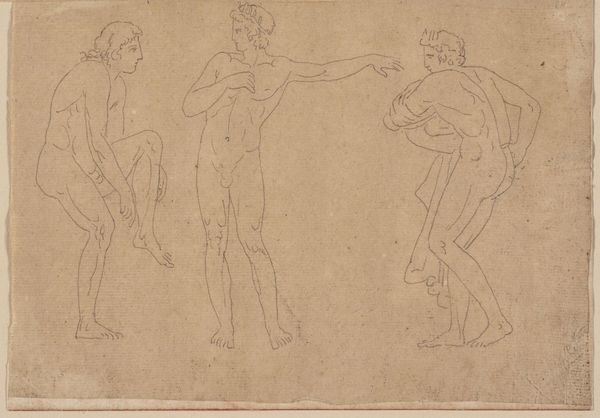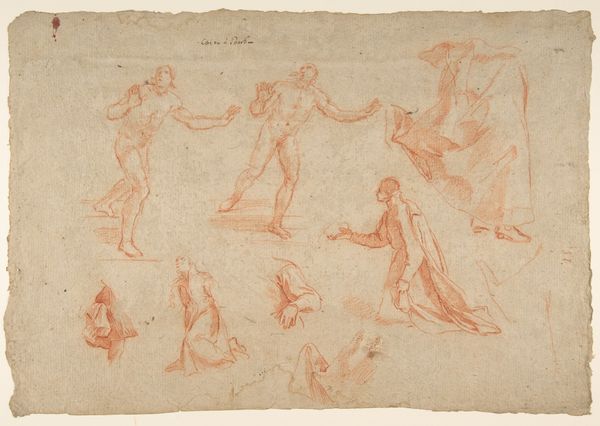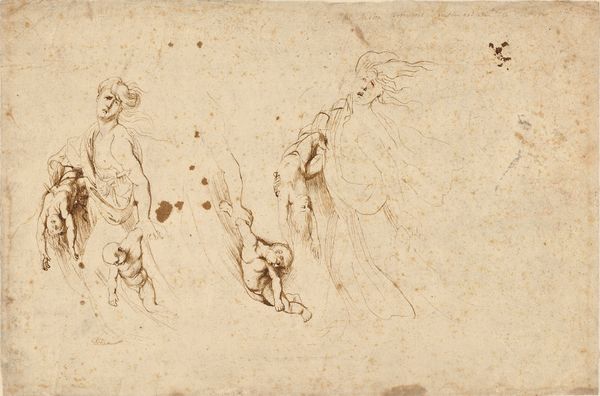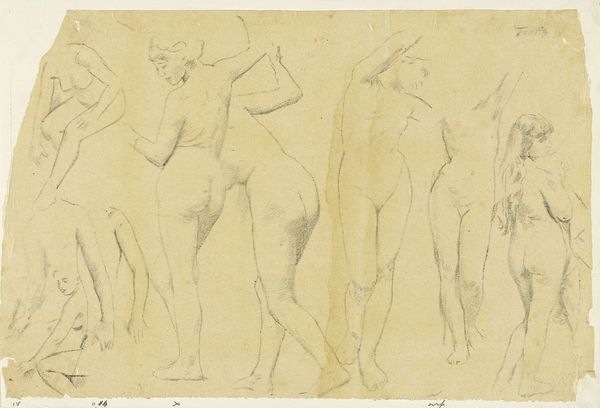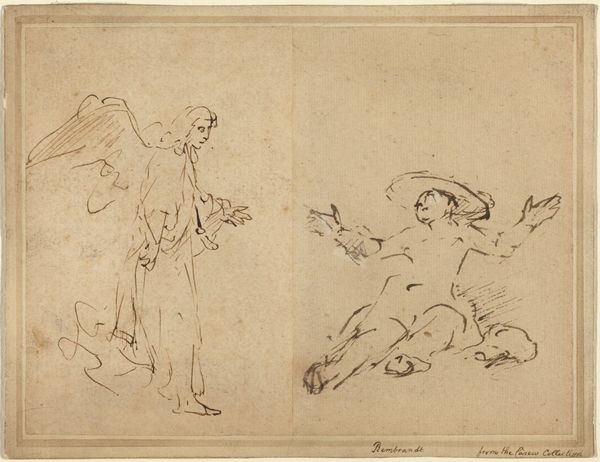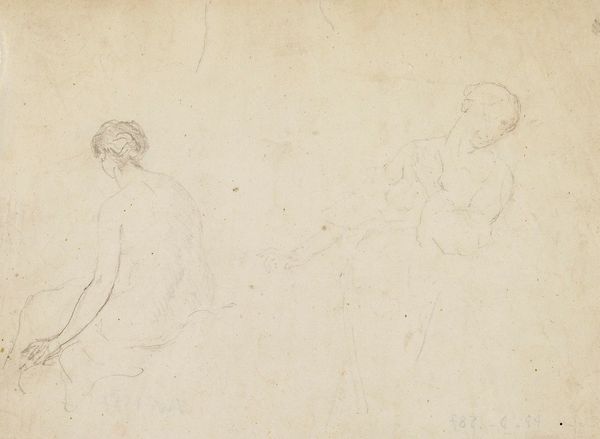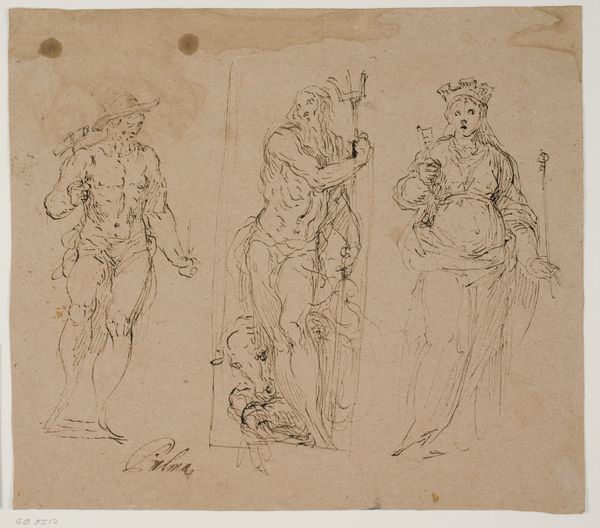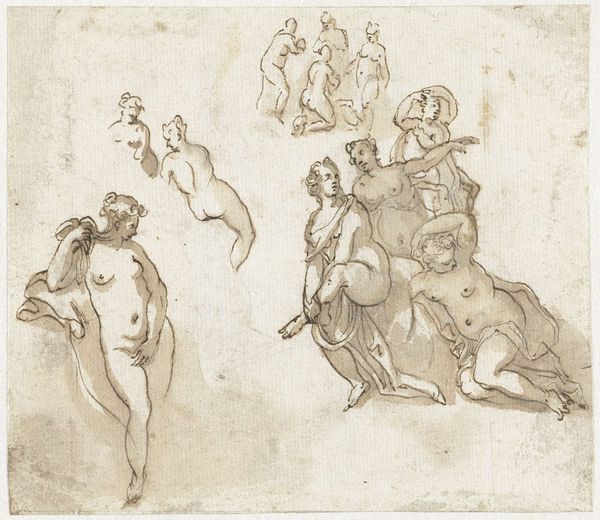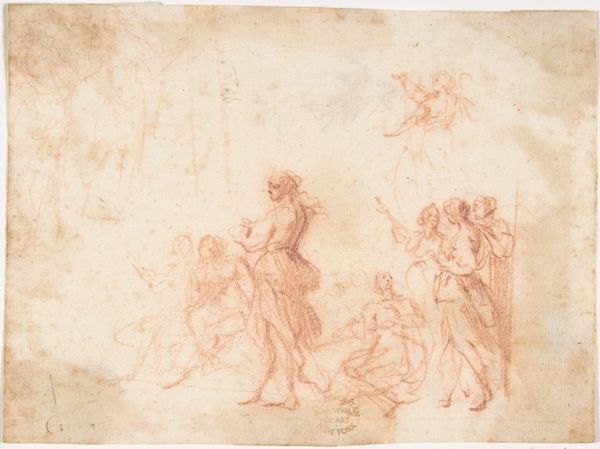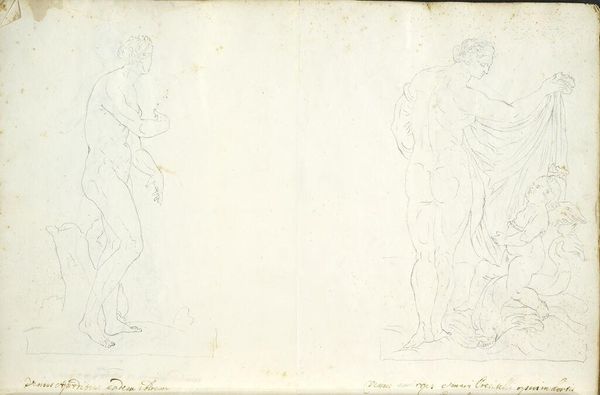
Three Nude Male Figures; Study of the Right Hand of the Figure on the Left 1708 - 1787
0:00
0:00
drawing
#
drawing
#
figuration
#
11_renaissance
#
academic-art
#
nude
Copyright: Public Domain: Artvee
Editor: Here we have Pompeo Batoni's "Three Nude Male Figures; Study of the Right Hand of the Figure on the Left," created sometime between 1708 and 1787. It's a red chalk drawing and feels very academic. What stands out to me is the raw, almost vulnerable depiction of the male form, contrasted with that intensely detailed hand study. How do you interpret this work? Curator: I see this drawing as deeply embedded within the social and intellectual currents of its time, the late Baroque/early Neoclassical period. It's seemingly a simple figure study, but what were the intended purposes of representing the male nude in such a manner? Whose gaze does this serve and how does it connect to contemporaneous ideas of masculinity, beauty, and power, especially during a period of rising revolution? Also, consider the artist's choice of red chalk. Why not charcoal or ink? Editor: That's fascinating. I hadn't considered the power dynamics. Perhaps red chalk lends a softer, more 'flesh-like' quality, emphasizing the humanity, or even vulnerability, of the subjects? I still wonder about that hand - is it purely anatomical or is there more to its significance? Curator: Exactly. What does this detached hand signify in relation to the three male figures? Does it gesture to broader artistic themes of creation, control, and even objectification within the history of art? What kind of art historical and social narrative does this juxtaposition establish and for whom? We need to examine how ideas around gender and identity inform this artwork’s genesis. Editor: It’s interesting how seemingly simple studies can hold layers of meaning that reflect their social context. Thank you for expanding my view of it. Curator: My pleasure! These are great avenues for thinking about this study in a wider scope. By analysing artworks through the lens of cultural critique, we become much more aware of their active role in shaping beliefs of the past.
Comments
No comments
Be the first to comment and join the conversation on the ultimate creative platform.

